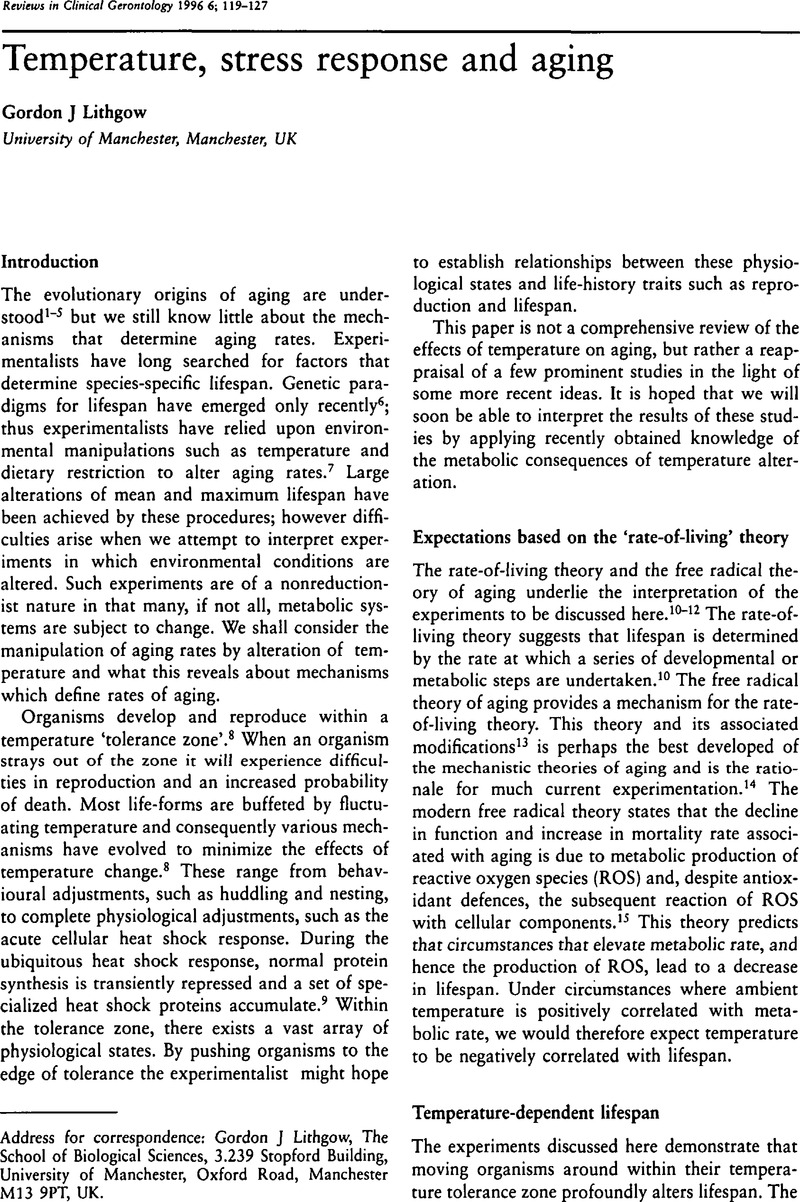Crossref Citations
This article has been cited by the following publications. This list is generated based on data provided by Crossref.
Kirkwood, T BL
and
Shanley, D P
2000.
Caloric restriction, hormesis and life history plasticity.
Human & Experimental Toxicology,
Vol. 19,
Issue. 6,
p.
338.
Chang, Karen T.
and
Min, Kyung-Tai
2002.
Regulation of lifespan by histone deacetylase.
Ageing Research Reviews,
Vol. 1,
Issue. 3,
p.
313.
Kang, Hyung-Lyun
Benzer, Seymour
and
Min, Kyung-Tai
2002.
Life extension in
Drosophila
by feeding a drug
.
Proceedings of the National Academy of Sciences,
Vol. 99,
Issue. 2,
p.
838.
Kim, Yumi
Nam, Hong Gil
and
Valenzano, Dario Riccardo
2016.
The short-lived African turquoise killifish: an emerging experimental model for ageing.
Disease Models & Mechanisms,
Vol. 9,
Issue. 2,
p.
115.
Wood, Zachary T.
Shepard, Isaac D.
Hurley, Stephen T.
Paisker, Mitchell R.
Hensley, Vanessa R.
and
Kinnison, Michael T.
2020.
Sex-Dependent Cold Tolerance at the Northern Invasive Range Limit of Gambusia affinis on Cape Cod, Massachusetts.
Copeia,
Vol. 108,
Issue. 3,
Žák, Jakub
and
Reichard, Martin
2020.
Fluctuating temperatures extend median lifespan, improve reproduction and reduce growth in turquoise killifish.
Experimental Gerontology,
Vol. 140,
Issue. ,
p.
111073.



